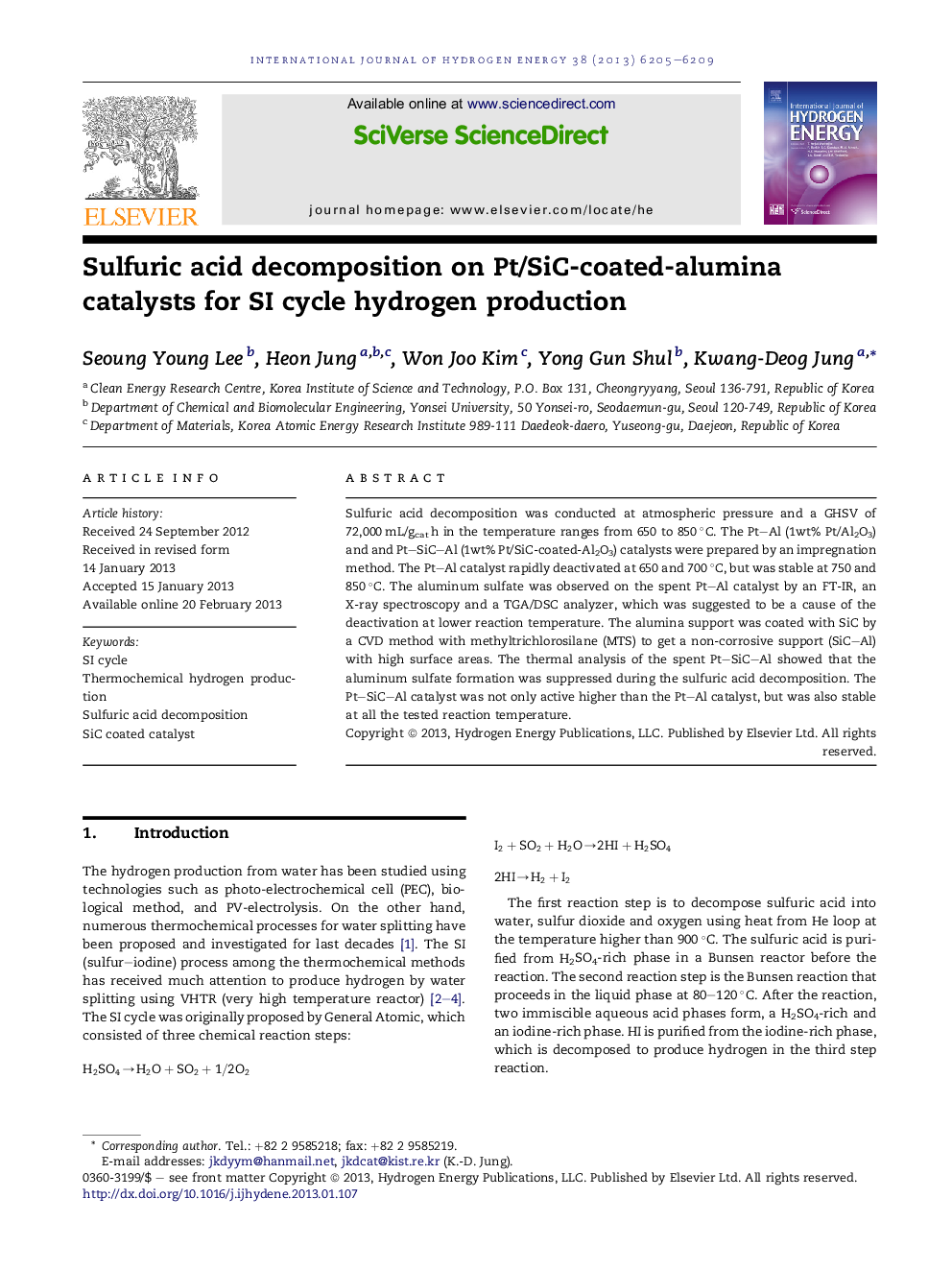| Article ID | Journal | Published Year | Pages | File Type |
|---|---|---|---|---|
| 1281741 | International Journal of Hydrogen Energy | 2013 | 5 Pages |
Sulfuric acid decomposition was conducted at atmospheric pressure and a GHSV of 72,000 mL/gcat h in the temperature ranges from 650 to 850 °C. The Pt–Al (1wt% Pt/Al2O3) and and Pt–SiC–Al (1wt% Pt/SiC-coated-Al2O3) catalysts were prepared by an impregnation method. The Pt–Al catalyst rapidly deactivated at 650 and 700 °C, but was stable at 750 and 850 °C. The aluminum sulfate was observed on the spent Pt–Al catalyst by an FT-IR, an X-ray spectroscopy and a TGA/DSC analyzer, which was suggested to be a cause of the deactivation at lower reaction temperature. The alumina support was coated with SiC by a CVD method with methyltrichlorosilane (MTS) to get a non-corrosive support (SiC–Al) with high surface areas. The thermal analysis of the spent Pt–SiC–Al showed that the aluminum sulfate formation was suppressed during the sulfuric acid decomposition. The Pt–SiC–Al catalyst was not only active higher than the Pt–Al catalyst, but was also stable at all the tested reaction temperature.
▶ The deactivation of Pt/Al2O3 catalyst was due to the formation of aluminum sulfate. ▶ A SiC coating method on alumina was developed. ▶ The Pt–SiC–Al catalyst can prevent the sulfate formation. ▶ The Pt–SiC–Al catalyst showed the higher stability and activity.
